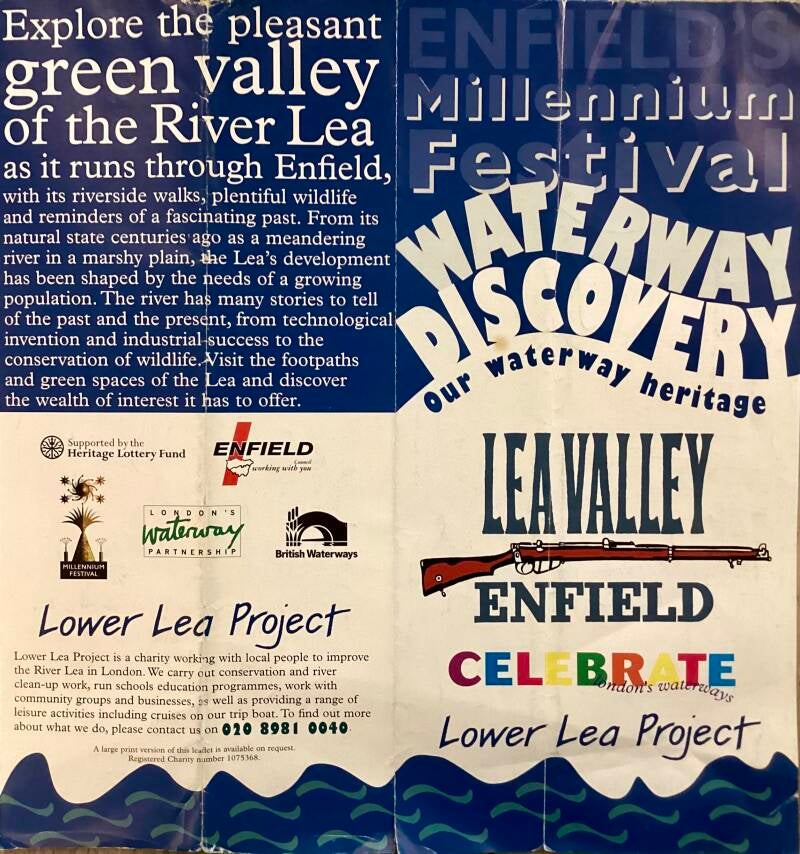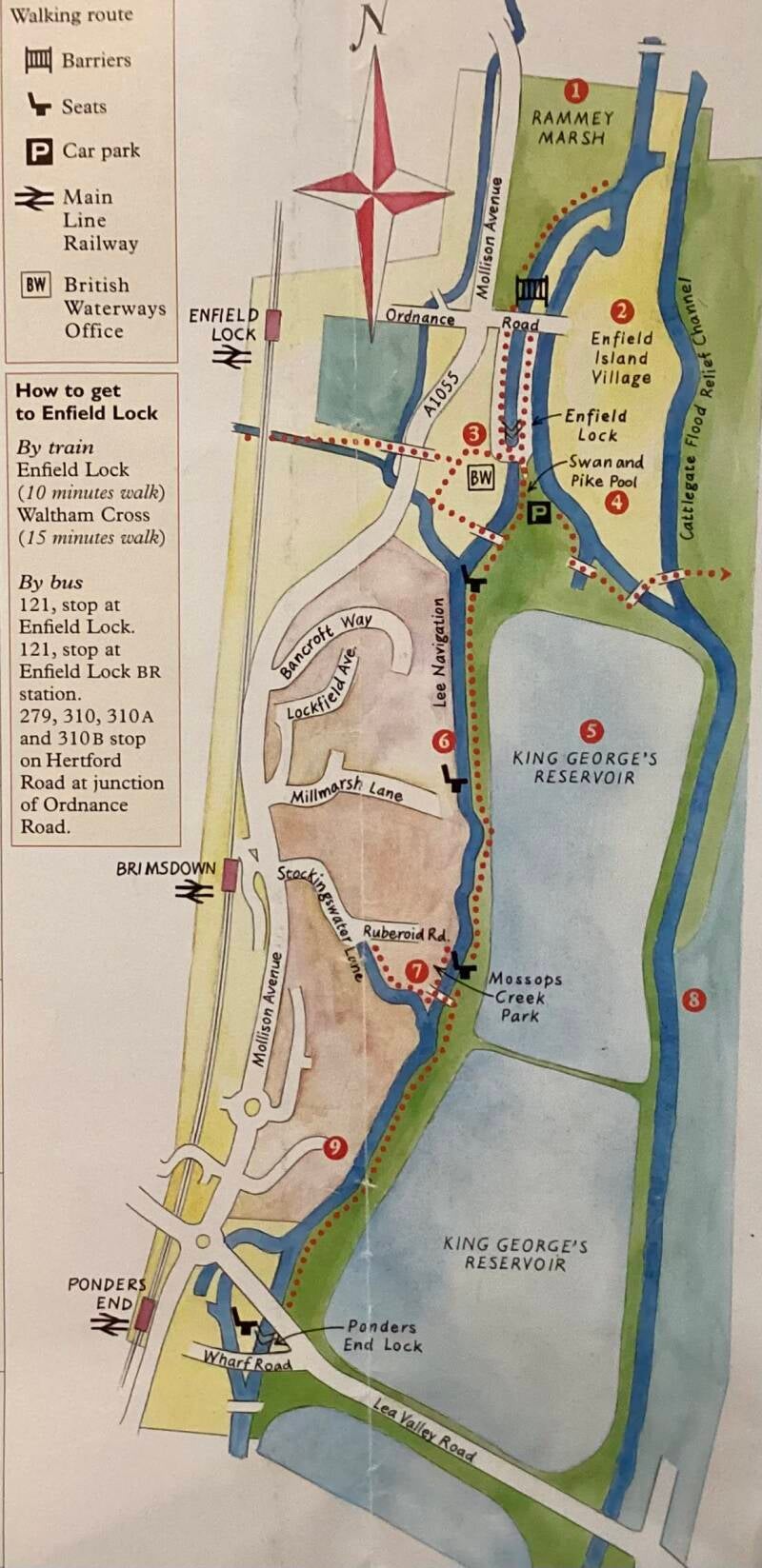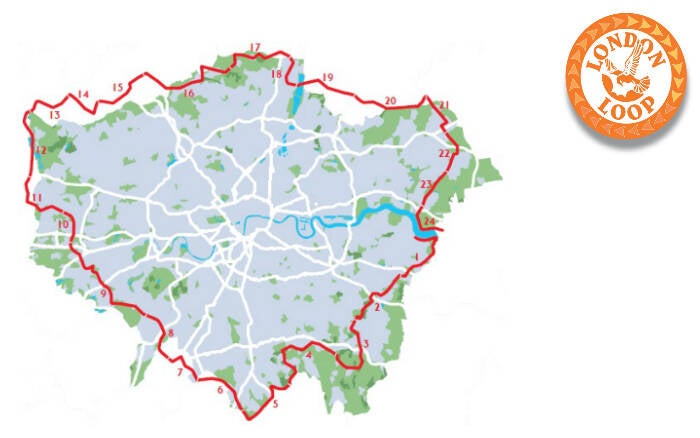From PONDERS END to WALTHAM ABBEY


Photo from the ENFIELD SOCIETY
PONDERS END
Former EDISWAN FACTORY
An important place in the history of the INDUSTRIAL REVOLUTION:
This former Ediswan factory general office block of 1890, at Ponders End, occupies part of a site associated with Sir JOSEPH SWAN (1828-1914), inventor of the incandescent electric lamp, Sir JAMES DEWAR (1842-1923), inventor of the vacuum flask, and PROFESSOR AMBROSE FLEMING (1849-1945), inventor of the diode radio valve in 1904, which marks the birth of the electronic technological revolution.
Britain’s first radio valve and television cathode ray tube factories were opened here, in 1916 and 1936 respectively. This building is not listed, despite the site’s historical importance.
In 1886 Sir JOSEPH SWAN (from SUNDERLAND) invented the light bulb.
In 1881 London’s Savoy Theatre became the first building in the world to be lit entirely by electricity. Swan supplied about 1,200 of his “incandescent lamps”. A year later, theatre impresario Richard D’Oyly staged the Gilbert and Sullivan operetta Iolanthe.
In 1882 Sir JAMES DEWAR invented the VACUUM or THERMOS FLASK
Former GRANVILLE TAVERN
Wright's Flour Mill
is located in Wharf Road, Ponders End, Enfield. It is Enfield's oldest working industrial building.[1]me of the present buildings date back to 1789 and include the brick Georgian miller's house and offices flanking a 3½-storey watermill of brick and white weatherboarding. There has been a mill here since at least the late 16th century and possibly Domesday. George Reynolds Wright took full control of the mill in 1870. Originally powered by a back water of the River Lea. In 1913 owing to construction work at the nearby King George V Reservoir the water supply which powered the millstones was cut off. The machinery was then converted to electricity. Since then further improvements have been made. The business is still owned by the Wright family making it London's only family owned flour mill
THE NAVIGATION INN
Ponders End Pumping Station. Built in 1899 by the East London Waterworks Company.[17] In 1995 the half-timbered building was converted into a public house called the Harvester Navigation Inn a Harvester restaurant. Located on the west bank of the Lee Navigation, with views towards the grassed embankment of the King George V Reservoir and close to Ponders End Lock.
Westwards, the A110 Road, NAGS HEAD ROAD, to SOUTHBURY LOG STA. and ENFIELD TOWN (see Part II). As you can see, PONDERS END RWY STA. is as well, nearby.



Eastwards, the A110, that IS, LEA VALLEY ROAD and KING’S HEAD will lead you to CHINGFORD (see Part IV)
PONDERS END LOCKS
Leaving the KING GEORGE V RESERVOIR to the N dnd to the W
To the N
KGV SAILING CLUB
LEA VALLEY CAMPSITE
Alongside A110
ROYAL OAK PH
The future king, CHARLES II, after the BATTLE OF WORCESTER, 1651 (and after his father’s e ecution, in 1649, in WHITEHALL) hid in an oak tree, before flying to France. And the name, became avery common one, to be given to INNS.
If you carry on your walking and cycling past PONDERS END LOCK, with the KGV RESERVOIR to your right…
PONDERS END LOCK. NAVIGATORS
Centuries ago the River Lea was a wide stream meandering through marshy pastureland, where cattle grazed. However the Lea's vital position, running from Hertfordshire to London meant that it was used by boats carrying freight, and through time, the course of the river was straightened to conserve water and make the passage of boats easier. The only evidence now of the Lea's original course is the winding line on old maps that used to mark the borough boundary, running through the middle of the reservoirs.
Canal traffic increased rapidly in the 18th century. In the 1760s plans were drawn up to build 'CUTS', to straighten sections of the winding river, and on 11th February 1769 JEREMIAH ILSKEY of Hackney was contracted to dig ENFIELD CUT at 3 pence (3d) a yard. He would have employed gangs of 'NAVIGATORS’ or ‘NAVVIES’, who constructed the canal by hand using picks and shovels, a very arduous task.
In 1793 the LOCK at Ponders End was built and a new NAVIGATION CUT started south of Ponders End. All this work was paid for by tolls levied on the river traffic.
In the mid 19th century 6000 tons of materials, mostly coal, were delivered to the RSAF every year by boat. As time went by more and more industries flocked to this convenient location, so that in the 19th and 20th centuries factories proliferated along the canal. There were chemical works, many timber and furniture factories, particularly at Ponders End and cargoes of copper were brought by barge to the Enfield Rolling Mills at
FACTORIES, FACTORIES, FACTORIES
Living conditions in the early Victorian era can be imagined. The rapidly growing towns that housed the industrial workforce were susceptible to flooding and had no safe sewage disposal. In 1886 the amouns of raw sewage being discharged into the Lea was such that a Select Committee on River Pollution caused a sewage purification works to be built, to combat the health hazard.
Even in the 20th century the river presented dangers. Local residents remember the factory-lined roadway that led to the river, with nothing to prevent strangers driving straight in on a foggy night... Life was hard for the men who worked the boats for a living, carrying cargoes up and down the Lea all year round, until river transport finally died out in the 1970s.
...to be sent up the Lea or canal in the middle of winter, I can't think of a harder tougher job. So cold, you're standing still with the rough tiller in your hand, you'd wrap newspapers round it and newspapers inside your coat..."
Living on the canals… the pub was not far away, though!
'The bargemen and the horse drivers they loved their pint. They would get to Ponders End, go in the pub and have a drink and then take the horse back to the stable... they get to the stable, undress the horse and decide to sleep in the stable instead of going home. They would eventually go home three days later, dirty after sleeping with the horse!'
Jim Stacey
MOSSOPS CREEK PARK
Mossop's Creek is a small inlet that once served riverside industry. Recently it has been landscaped and transformed into Mossop's Creek Park by London Borough of Enfield. A new blue bridge over the Lea links the towpath to Mossops Creek Park and Stockingswater Lane. See the decorative mosaics set in the ground next to the bridge, designed and made-by local people.
FLOODS!. Relief channels to the EAST of the GV RESERVOIR
Flooding has historically been a problem on the Lea, with several instances of serious flooding this century. Flood relief channels were built to the east of the reservoirs and the flood alleviation scheme was completed in 1977.
"In 1947 the River Lea burst its banks and we had floods, really bad floods. It was the month my brother was born, my youngest brother and all our gardens were just deep water and all the street... and the man across the road... used to come along, call up to my Mum and he used to go round in the boat to get the shopping for us."
Doreen
RESERVOIRS. Water for more Londoners
VICTORIAN and EDWARDIAN London's rapidly increasing population meant that clean water supplies were much in demand. In 1900 approval was given for a scheme to construct SIX NEW RESERVOIRS between Walthamstow and Enfield Lock, using the water of the Lea, but ensuring enough water was left in the river for navigation. They were built on marshland and the commoners who had the right to graze their animals there, were compensated.
The King himself opened the King George V reservoir in 1913, the largest in England, with a circumference of 5 miles. The PUMPING STATION near Enfield Lock, now a listed building, took water into the reservoir from the Lea using HUMPHRY GAS PUMPS, a unique design PIONEERED in Enfield. There is no public access to the reservoir now; it is an SSSI, important for its large populations of overwintering birds. Sheep, cows and horses are to be seen grazing the grassy banks and surrounding areas, an attractive as well as practical feature.


David Beckham played football for Brimsdown Rovers’ youth team for two years. The club has since merged with Enfield FC, which now plays its home games at Brimsdown sports ground.
The comedian Russell Kane said in his online autobiography (which has since disappeared from the web): “I was raised, and at the same time paradoxically lowered, on the lovely councilly streets of Brimsdown.”

OFFICE
The LONDON LOOP: to ENFIELD (FORTY HALL) or to CHINGFORD
The London Loop is a waymarked route around London, running through Enfield Lock. Follow it westward across Prince of Wales Field and over Mollison Avenue, to join Turkey Brook, a tributary of the Lea. The path follows Turkey Brook all the way through Turkey St, Forty Hall and Hilly Fields Park, revealing an interesting mixture of town and country.
To cross the Lee Valley EASTWARDS to CHINGFORD,, follow the path along the river from SWAN AND PIKE ROAD. Here the channel is full of reeds and other water plants, a haven for waterbirds, and in the summer clouds of dragonflies and damselflies fill the air, but take care on the uneven, often overgrown path.
The SWAN AND PIKE POOL and ENFIELD LOCK
Enfield Lock itself is operational, allowing boats to pass up and down stream, and is also part of the Enfield Lock Conservation Area.
The Swan and Pike Pool, just south of the Lock, was formerly a bathing pool but is now a picnic area, with a small woodland protected by a tree preservation order.
On the western bank below Enfield Lock is the DEPOT from where maintenance of the Rivers Lee and Stort is carried out. This site is now also being partially developed for housing and workshops.
A little south of the Swan and Pike Pool on the Lee Navigation, there is a BRIDGE and path leading to the SMALL RIVER LEA. This follows the line of the former railway track serving the ROYAL SMALL ARMS FACTORY, although the bridge over the Small Lea has now been demolished.
The ENFIELD ISLAND VILLAGE
If you are a pacifist, avoid this place… The RSAF

This was the site of the ROYAL SMALL ARMS FACTORY, which
200 years ago, was established on a 90 acre site in the far North East corner of the London Borough of Enfield. The factory was once renowned worldwide for the manufacture of the Lee Enfield Rifle, as a centre for technical innovation and for it’s training programme through the apprenticeship scheme set up in the 19th century.
Enfield's most famous industry, the Royal Small Arms Factory was established in 1816, when the Government's weapons factory was set up in Enfield, using water power to drive the machinery. Enfield Lock was marshy and unappealing at that time, far from other habitation and the road leading to it, Welch's Lane (later ORDNANCE ROAD) was in poor repair and often under water.
Houses had to be built for the workers and their families, some of which, notably GOVERNMENT ROW, still exist and in 1846 a SCHOOLand CHURCH were added to the factory buildings.
The factory was rebuilt in the 1850s to accommodate MASS PRODYCTION when new machine tools were brought in from the USA, a development that led to Enfield becoming famous for its PRECISION manufacture weapons.
The LEE ENFIELD RIFLE is the best known of its products; the “LEE” in the name actually refers to the inventor of the mechanism, not the river.
Millions of these weapons were produced, used by the ALLIED FORCES in the two world wars of the 20th c.
A major local employer for over a century, the RSAF finally closed in 1988 and now, as Enfield Island Village, much of the site is being developed for housing.


After ORDNANCE ROAD, you will go past BARRIERS
RAMMEY MARSH
Rammey Marsh is part of the original flood plain of the River Lea, used since Anglo-Saxon times for summer grazing pasture. It is now a valuable wildlife habitat supporting many birds such as linnets and skylarks that are becoming increasingly rare.
Where the Lee Navigation joins the Cattlegate Flood Relief Channel an extensive area of reedbeds provide nesting sites and protection for moorhens, coots and reed warblers, while kingfishers nest in holes in the banks.
This old leaflet has proved very useful!


GUNPOWDER COUNTRY PARK
Another reminder of Waltham Abbey’s ‘explosive’ past, Gunpowder Park was formerly a ROYAL ORDNANCE site concerned with munitions testing. Now given over to wildlife, features of the original landscape have been retained and the entrance and graphics evoke its former life and the area’s connection with the manufacture of gunpowder and explosives. The park has been given a Green Flag Award.
As well as open space for recreation, outdoor pursuits, arts and entertainment, the park has fields, meadow and marsh to be enjoyed by walkers and cyclists throughout the year and horse riders on the permissive bridleway in the summer.
Remember that further down the river at THREE MILLS, near BROMLEY BY BOW, NICHOLSON’s (of CLERKENWELL) had established a Gin Distillery?. Thanks to the import of grain down the LEA. It was there that a JEWISH immigrant by the name of CHAIM WEIZMANN, made a vital contribution to the First World War effort. He came up with a method of turning GRAIN into ACETONE which was crucial to the manufacture of cordite explosive propellants.
Having produced 30,000 tonnes of acetone to support the war effort, at Nicholson's and other factories around the country, Weizmann, who was a key Jewish ACTIVIST at the time, was courted by well-known and respected figures such as BALFOUR, LLOYD GRORGE and CHURCHILL.
Although he constantly refused honours for his war work, he did make the case for a HOMELAND for his people. By 1948, he had been sworn in as the FIRST President of Israel. So it's not too far a stretch to say that the origins of the State of Israel lie by the RIVER LEA!.
The M25




Create Your Own Website With Webador